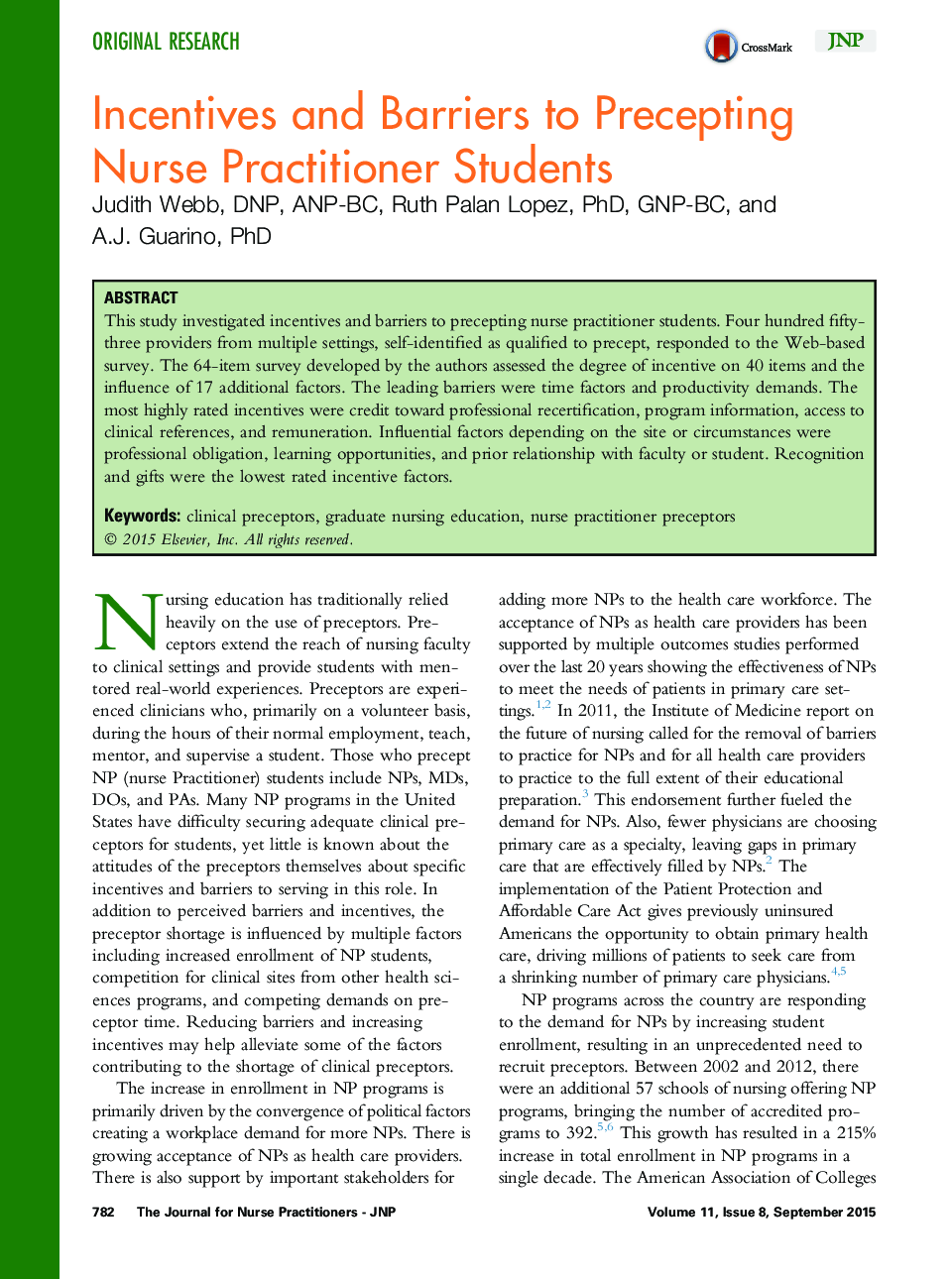| Article ID | Journal | Published Year | Pages | File Type |
|---|---|---|---|---|
| 2663101 | The Journal for Nurse Practitioners | 2015 | 8 Pages |
•Four hundred fifty-three preceptors across multiple settings identified incentives and barriers to precepting.•Leading incentives to precept are credit toward recertification, program information, and remuneration.•Leading barriers identified by preceptors are time constraints and productivity demands.•Preceptors were influenced by professional obligation; learning opportunities as a preceptor; and a prior relationship with the faculty, school, or student.•Past studies have not identified remuneration as an incentive, reflecting a change in attitudes toward precepting as a volunteer role.
This study investigated incentives and barriers to precepting nurse practitioner students. Four hundred fifty-three providers from multiple settings, self-identified as qualified to precept, responded to the Web-based survey. The 64-item survey developed by the authors assessed the degree of incentive on 40 items and the influence of 17 additional factors. The leading barriers were time factors and productivity demands. The most highly rated incentives were credit toward professional recertification, program information, access to clinical references, and remuneration. Influential factors depending on the site or circumstances were professional obligation, learning opportunities, and prior relationship with faculty or student. Recognition and gifts were the lowest rated incentive factors.
